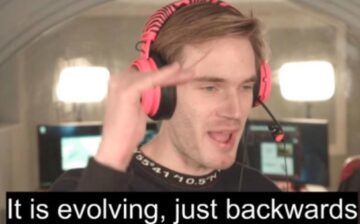
Image from here
*A slightly long post discussing the key ideas of the essay.*
A few months ago, I wrote a detailed post discussing the history of IP teaching in India highlighting that the same gained traction after the 2000s. There I asked, “[w]hether this delay has potentially trapped us in an epistemological framework given a canonical body of work that has already developed during or before our entry into IP teaching and research.” Peter Drahos’ words also resonate here “US power … did not just have a trade center, but was also based on the possession of a body of juristic and economic knowledge that was mobilised at crucial stages by individuals who saw opportunities where others only saw constraints.” Swaraj, who first nudged my thinking in this direction, has made similar observations/points, particularly in his book chapter.
There is indeed an issue about who (gets to) generates knowledge in the field and how it impacts knowledge governance overall. Among other things, all this has a lot to do with whom we cite in our works and how we get to do that. With the serial crisis already a concern, open-access material is essential. However, a quick search shows that Global North scholars dominate these open-access platforms and repositories. E.g., see SSRN’s Top 50 Authors, Papers, or Organizations list, Top Law Authors, Top Organizations; Top Downloads For Intellectual Property Law eJournals, and HeinOnline scholar ranking. Even in the top 10 IP blogs in the world, only one or two from the Global South. E.g., see here, here, here.
All these made me wonder: Whither Global South’s IP, especially Copyright scholars and their scholarship? Do they not publish much, or is their work simply not visible to wider audiences? And what’s the cost of that? While I have been contemplating these questions for the last few years, this time, I thought of putting together my thoughts and sending them as my entry to ATRIP’s annual essay competition, a prestigious event organized annually since 2007 for young IP researchers/scholars worldwide. I hoped it would bring this topic to the fore and help me get some answers or enable me to frame the issue better. Plus, if not win, at least, it would help me get the essay read by the people who, (and whose work) hold authority in the field, creating some awareness about the issue.
Well … little did I know that not only would my entry be appreciated, but the ATRIP Committee would also anoint it with the first prize. The 2nd and 3rd places were secured by two fabulous essays by Jordana Goodman, and Francesca Mazzi respectively. This post is to share the key ideas of my essay and invite readers to share their views as I finalize the paper for publication. You can find my full essay on my SSRN page or ATRIP website. Two important disclaimers are in order before I proceed. Firstly, while I acknowledge the potential risk of using broad/open terms like Global South and Global North given their imprecise geographical connotation (including 130+ nations), I use them for interventionist potential. Moreover, for the essay I refer to Global South scholars as those originating from the countries of the Global South, regardless of their current location. Second, this essay does not intend to antagonize Global North scholars or discount their work. I value their contributions but aim to encourage conscious thinking about whom we cite and why, and how it impacts our thinking. Okay … enough context and background!
Let me reproduce the essay’s central claim below: “[m]any Global South countries’ academic engagement with IP law started very late (as I explain below), and by that time a body of literature had already developed and framed epistemic framework[s] within which IP discourses would take place. Later, these discourses get normalized and traveled through citations or the “Citation Game” as I call it. Its problematic because the underlying epistemic structure endorses certain ideas and reforms while inhibiting others that disrupt them. Remaining under the garb of being “normal” discourse, it can easily remain apathetic to the needs of countries without anyone noticing it. To illustrate this, I examine Article 17 of the Berne Convention and demonstrate how its dominant interpretations aligned with dominant discourses overshadow alternative readings, such as its potential use during emergencies like pandemics.”
Below is how I structured the essay.
Part II – Global South’s IP Academic Lag
Pursuant to the claim, the essay has six chapters including an introduction and conclusion. After contextualizing the issue in the introduction, the second part expands on the claims of the later advent of IP teaching in Global South countries providing examples of various countries whose initial IP teaching and research were shaped/influenced by the Global North. In sum, this chapter claims that “[w]hile scholarship inequality stems from various geopolitical and cultural factors, the slow and later uptake of IP academization in the Global South has arguably placed (or trapped) their scholars to comply with existing epistemological frameworks. The historical understanding of teaching a subject reveals a deep connection about whose ideas gain canonical status and citation prominence, which then bolster dominant discourses and epistemic structures.”
Part III. Late IP Academization and the Discourse Dynamics
This part theorizes and exemplifies the notion of epistemic structure with the help of Michel Foucault’s concepts of Episteme and Discourse. I argue that every era has a dominant episteme or “general system of thought” through which all the problems are framed and resolved. Discourse runs within, serves, and simultaneously shapes our epistemic reality. It functions as a tool of control and discipline to justify. Anything out of the discourse is often regarded as unacceptable/theoretical/abstract/impractical. For copyright law (or perhaps, IP in general), utilitarianism is the dominant episteme, and “Balance” is the dominant discourse that serves and shapes the episteme. Of course, one can say that some other epistemes and discourses exist at the same time. Well, maybe, I don’t deny it. What I am concerned with is the dominant episteme and discourse. Then, I go on to discuss why they are dominant.
Part IV. The Citation Game: How Discourses Travel and Impact
Here comes a question: how do these discourses travel and serve the episteme? The fourth part of the essay answers this by introducing the idea of the “Citation Game.” The “citation game” refers to the strategy academics and researchers use when writing scholarly works, including rules about what and whom to cite, using “original/authentic” sources, avoiding plagiarism, and following specific citation methods. Success in this game can lead to recognition, top-tier publications, securing tenure, and delivering well-regarded decisions. Beyond these rewards, the game can influence real-life narratives, legitimize certain ideas, perpetuate biases, and support ideologies.
You might say, “This is all cool, but what’s next?” Well, the next step is to scrutinize my theoretical claims that “delayed entry into IP education and research may have ensnared us in an epistemological framework, reinforcing discourses like “balance” that neglect countries’ socio-economic needs, deeply connected with historical injustices perpetrated against them.” To do that, I take Article 17 of the Berne Convention, whose ordinary meaning doesn’t fit the dominant discourse and likely disturbs the episteme (see here for more).
Article 17 reads: “The provisions of this Convention cannot in any way affect the right of the Government of each country of the Union to permit, to control, or to prohibit, by legislation or regulation, the circulation, presentation, or exhibition of any work or production in regard to which the competent authority may find it necessary to exercise that right.” (emphasis supplied.)
*Remember the bold part*
If you read the provision, it clearly grants a sovereign authority to the states to “permit” the circulation/presentation/exhibition of copyrighted work without the author’s permission in case of necessity. However, the dominant interpretation of the provision regards it as a censorship provision that only grants states “to control and prohibit” copyrighted works in case of necessity. However, this is like reading the words “to control, or to prohibit” while ignoring the positive power of the state that flows from the word “to permit.” (I expound this in the next section.)
But this isn’t all. Here lies the rub: how this provision with such clear wording is interpreted narrowly. An answer is that it coincides with the dominant discourse of the time i.e., it furthers the idea that even in the case of necessity (which can arguably include a pandemic), a state should “balance” public interest with author rights over the work. Au contraire, with the ordinary meaning, the state can simply “permit” the circulation of works without the author’s permission in case of necessity. Remember again what Foucuolt said: anything that goes out of discourse would be unacceptable and regarded as theoretical/impractical/bad/immoral/unethical.
But then comes another question: how did the provision even become dominant? For that, I do a quick un-performing (in the sense of how it might have happened) of the “Citation Game” exercise showing how citations legitimize ideas over the period.
Part V: Alternative Interpretation of Article 17
One may ask, with such serious claims and doubting the “dominants” of the field, how I can confidently state that Article 17 is about the state’s regulatory authority and permits states to permit when necessary. The answer lies in the fifth part, which categorically proves this using the interpretation tools of the Vienna Convention (Articles 31 and 32). Since its inception in the 1885 Berne Convention draft, Article 17 has always been about state regulatory authority, and remained unchanged. However, the issue is that the provision has largely been overlooked (perhaps there was no need to discuss this separately), receiving negligible attention of its own except in a few commentaries mostly written after the 2000s – a time when “balance” had already become a dominant discourse. The 1908 and 1967 revision conferences support this interpretation. For more, see my IPKat post where I briefly explain this argument.
Conclusion
Of course, like any work, the essay has its limitations. I anticipated two main criticisms and addressed them in the conclusion. First, some might accuse me of falling into the “Citation Game” by citing many Global North scholars to support my claims. I agree. While I was very mindful of this issue and preferred citing Global South, women, or young scholars, I couldn’t be perfect. But wait, wasn’t that the whole point – to be conscious of the game even while playing it? After all, I was writing for a competition that judged my “appropriateness of references to the current and relevant literature.” (Kinda citation game rule. No? Haha). The upshot is that with this admission and awareness of the game, I can be more like Neo with full awareness of the Matrix, rather than living in denial.
Secondly, the essay might be seen as over-focusing on an overlooked provision with little real-life impact, given the power imbalance. Although sincere, this criticism corroborates my critique of the international legal order which supports and is supported by the dominant discourse. Anything out of the discourse, as I said above, will appear theoretical/abstract/impractical, etc. Let me say this again, this essay’s aim goes beyond Article 17. As I noted there, “[t]his interpretation, irrespective of its acceptance at the global level, is to challenge our entrenched reading and understanding of copyright law (both historical and contemporary).”
To conclude, as I noted in the essay, “whether the dominant interpretation(s) or the discourse(s) “can” go away or not, depends on infinite implicit “ifs” including some counter-factual “ifs.” If some of the “ifs” happen to favor the proposal, it will work. If not, then I will revisit my agenda and direct more energy to reform it. Because to critique is to care.”
Acknowledgments: This essay’s foundation emerged from long-term discussions with Swaraj especially during our work on SpicyIP’s Open IP Syllabus in 2020. Later, these ideas developed during my work with Prof. Sean Flynn and through conversations with my supervisors, Professors Séverine Dussolier and Alain Pottage. For my thoughts, I remain intellectually indebted to many amazing scholars, particularly, Shivam Kaushik, Prashant Reddy, Aditya Gupta, Niharika Salar, Aakanksha Kumar, Dr. N. S. Gopalakrishnan, Artha Dermawan, Thibault Mechler, and Carys Craig among others. May their tribe increase!
- SEO Powered Content & PR Distribution. Get Amplified Today.
- PlatoData.Network Vertical Generative Ai. Empower Yourself. Access Here.
- PlatoAiStream. Web3 Intelligence. Knowledge Amplified. Access Here.
- PlatoESG. Carbon, CleanTech, Energy, Environment, Solar, Waste Management. Access Here.
- PlatoHealth. Biotech and Clinical Trials Intelligence. Access Here.
- Source: https://spicyip.com/2024/05/atrip-winning-essay-2023-whither-global-souths-copyright-scholars-lost-in-the-citation-game.html
- :has
- :is
- :not
- :where
- 02
- 10
- 11
- 17
- 2%
- 2000s
- 2007
- 2020
- 2023
- 2nd
- 31
- 32
- 3rd
- 50
- 800
- a
- About
- above
- academic
- academics
- acceptance
- acknowledge
- addressed
- advent
- affect
- After
- again
- against
- agenda
- ago
- agree
- aim
- aligned
- All
- already
- also
- alt
- alternative
- Although
- always
- am
- amazing
- among
- an
- and
- annual
- Annually
- Another
- answer
- answers
- Anticipated
- any
- anyone
- anything
- appear
- appreciated
- ARE
- arguably
- argue
- argument
- article
- articles
- AS
- ask
- asked
- At
- attention
- audiences
- author
- authority
- authors
- avoiding
- awareness
- away
- based
- BE
- because
- become
- been
- before
- being
- below
- Better
- Beyond
- biases
- blogs
- body
- bold
- bolster
- both
- briefly
- bring
- but
- by
- call
- CAN
- cannot
- care
- case
- Center
- central
- certain
- CFM
- challenge
- Chapter
- chapters
- Circulation
- citing
- claim
- claims
- clear
- clearly
- coincides
- comes
- committee
- competition
- comply
- concepts
- Concern
- concerned
- conclude
- conclusion
- conferences
- confidently
- connected
- connection
- conscious
- contemporary
- context
- contributions
- control
- Convention
- conversations
- Cool
- copyright
- corroborates
- Cost
- countries
- country
- course
- Craig
- Creating
- crisis
- criticism
- criticisms
- crucial
- cultural
- Current
- decisions
- deep
- deeply
- delay
- delivering
- demonstrate
- depends
- detailed
- developed
- DID
- direct
- direction
- discipline
- Discount
- discourse
- discuss
- discussing
- discussions
- Disrupt
- do
- does
- Doesn’t
- dominant
- dominate
- Dont
- downloads
- dr
- draft
- during
- e
- each
- easily
- Economic
- Education
- emerged
- emphasis
- enable
- encourage
- Endorses
- energy
- engagement
- enough
- entrenched
- entry
- Era
- especially
- ESSAY
- essential
- etc
- Ether (ETH)
- Even
- Event
- Every
- examine
- examples
- Except
- exemplifies
- Exercise
- exhibition
- exist
- existing
- expands
- Explain
- factors
- Falling
- favor
- few
- field
- fifth
- finalize
- Find
- First
- firstly
- fit
- Flows
- following
- For
- fore
- Foundation
- Fourth
- FRAME
- Framework
- frameworks
- from
- full
- functions
- Gain
- gained
- game
- General
- generates
- geographical
- geopolitical
- get
- gets
- given
- Global
- Go
- Goes
- governance
- Government
- grants
- Gupta
- had
- haha
- happen
- happened
- Have
- help
- here
- highlighting
- his
- historical
- hold
- How
- However
- HTML
- http
- HTTPS
- i
- idea
- ideas
- ideologies
- if
- ii
- iii
- illustrate
- imbalance
- Impact
- Impacts
- important
- in
- inception
- include
- Including
- indebted
- indeed
- individuals
- Inequality
- influence
- initial
- intellectual
- intellectual property
- intend
- interest
- International
- interpretation
- into
- introducing
- Introduction
- invite
- IP
- irrespective
- issue
- IT
- ITS
- just
- Key
- Know
- knowledge
- kumar
- largely
- Last
- Late
- later
- Law
- lead
- least
- Legal
- Legislation
- let
- Level
- lies
- like
- likely
- limitations
- List
- literature
- little
- living
- location
- Long
- long-term
- lost
- Lot
- made
- Main
- many
- material
- May..
- maybe
- me
- meaning
- methods
- might
- months
- more
- Moreover
- mostly
- much
- my
- narratives
- Nations
- necessary
- necessity
- Need
- needs
- neglect
- NEO
- next
- no
- North
- noted
- Notion
- of
- often
- Okay
- on
- ONE
- only
- open
- opportunities
- or
- order
- ordinary
- Organized
- originating
- Other
- Others
- our
- out
- over
- overall
- own
- pandemic
- Pandemics
- Paper
- papers
- part
- particularly
- People
- perfect
- perhaps
- period
- permission
- permits
- perpetuate
- Peter
- Place
- placed
- Places
- Platforms
- plato
- Plato Data Intelligence
- PlatoData
- playing
- plus
- Point
- positive
- possession
- Post
- potential
- potentially
- power
- preferred
- presentation
- prestigious
- prize
- problems
- proceed
- Production
- prof
- prohibit
- prominence
- property
- proposal
- proves
- providing
- provision
- public
- Publication
- publications
- publish
- Putting
- question
- Questions
- Quick
- rather
- Read
- readers
- Reading
- reads
- Reality
- receiving
- recognition
- refer
- references
- refers
- reform
- regard
- regarded
- Regardless
- regards
- Regulation
- regulatory
- reinforcing
- relevant
- remain
- remained
- remaining
- remember
- research
- researchers
- resolved
- Resonate
- Reveals
- Rewards
- right
- rights
- Risk
- Rule
- rules
- runs
- s
- Said
- same
- saw
- say
- Scholar
- Scholars
- Sean
- Search
- Second
- Section
- Secured
- securing
- see
- seen
- sending
- sense
- separately
- serial
- serious
- serve
- serves
- shapes
- Share
- should
- showing
- Shows
- similar
- simply
- simultaneously
- since
- sincere
- SIX
- slightly
- slow
- some
- Sources
- South
- sovereign
- specific
- stages
- started
- State
- States
- Status
- stems
- Step
- Strategy
- structure
- structured
- structures
- subject
- success
- such
- sum
- supplied
- support
- Supported
- Supports
- system
- T
- Take
- Teaching
- tenure
- terms
- than
- that
- The
- The State
- the world
- their
- Them
- then
- theoretical
- There.
- These
- they
- things
- Thinking
- this
- those
- thought
- Through
- time
- to
- together
- tool
- tools
- top
- Top 10
- topic
- traction
- trade
- trapped
- travel
- traveled
- Tribe
- two
- unchanged
- under
- underlying
- understanding
- union
- uptake
- us
- use
- using
- value
- various
- very
- views
- visible
- W
- wait
- was
- Way..
- we
- WELL
- were
- What
- when
- which
- while
- WHO
- whole
- whom
- whose
- why
- wider
- Wikipedia
- will
- win
- winning
- with
- within
- without
- Women
- wonder
- Word
- wording
- words
- Work
- works
- world
- worldwide
- would
- writing
- written
- wrote
- years
- you
- young
- zephyrnet












